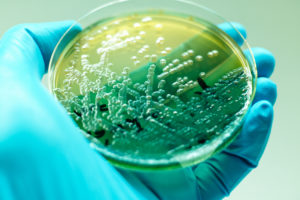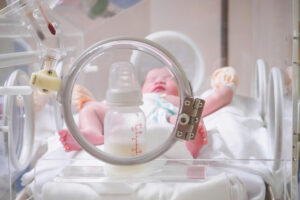Recently, I blogged about Johnson & Johnson’s Oct. 18 recall of nearly 33,000 bottles of its baby powder, which came alongside a disclosure that a government-funded test detected traces of cancer-causing asbestos particles in a sample of the powder. The contaminated sample came from Baby Powder lot #22318RB, which resulted in the recall of all bottles in the lot.
The recall is significant because it is the first time that a government-ordered test of baby powder detected asbestos. In this case, asbestos was detected by researchers in a laboratory under a U.S. Food & Drug Administration (FDA) contract. J&J has since challenged the validity of the test result, claiming on Oct. 30 that 15 further tests of the tainted bottle of Baby Powder found no asbestos in the sample. Now, it’s come to light that J&J rushed additional test results to prove the bottle was asbestos-free.
It turns out that the Pennsylvania-based lab RJ Lee Group, of the labs hired by J&J to do further testing, changed its normal testing practices to get the results to J&J quickly. One of the testing rooms used to test the baby powder sample is typically used to analyze gunshot residue in crime scene investigations. The sample tested in that room tested positive for asbestos, but the lab concluded that the room was contaminated by an air conditioner, making the results unreliable. A second lab that performed testing, the Georgia-based Bureau Veritas North America, detected no asbestos in its preliminary testing, but had not completed its testing when J&J publicly announced that follow-up tests did not detect asbestos.
J&J’s rushed results are unsurprising, as the company already has a decades-long history of hiding the detection of asbestos in its baby powder from the public. In fact, J&J failed to notify the FDA that three tests conducted by three different labs from 1972 had found asbestos in their talc powder. Even earlier reports of tainted J&J talc baby powder date back to the late 1950s.
How Do Asbestos Contaminate Baby Powder Supplies?
The main component of J&J’s Baby Powder is talcum (talc). Talcum is a natural clay mineral that is mined from the Earth and used in baby powder to prevent diaper rash. Asbestos refers to a group of six naturally-occuring minerals that can be found in many of the same mines as talcum. Serious health consequences can result from even trace amounts of asbestos exposure, which is linked to progressive and sometimes fatal diseases including lung cancer, mesothelioma and asbestosis. It can take years or even decades after being exposed to asbestos for the health impacts to emerge.
There have been over 19,000 claims filed against Johnson & Johnson by plaintiffs who allege that their cancer was caused by exposure to asbestos in J&J’s products. In two past two years alone, multiple juries have sided with plaintiffs, ordering J&J to pay over $5 billion in damages for the irreversible harm it has caused.
If you or a loved one developed ovarian cancer or mesothelioma after using J&J talcum containing products please give the dangerous drug and device attorneys at Childers, Schlueter, & Smith a call at 800-641-0098 or fill out our online contact form. All initial inquiries are free of charge and without obligation.

A partner with Childers, Schlueter & Smith, LLC,, Brandon Smith has devoted his practice to pharmaceutical litigation, mass torts, products liability and serious personal injury. A frequent guest speaker at legal seminars all over the country—Brandon is focused on helping injured victims nationwide, however possible. Named a SuperLawyer again in 2019, he has also been called out as one of 10 Best Attorneys For Georgia by the American Institute Of Personal Injury Attorneys and a Top 100 Lawyer in Georgia by the National Trial Lawyers in 2019.










Comments for this article are closed.